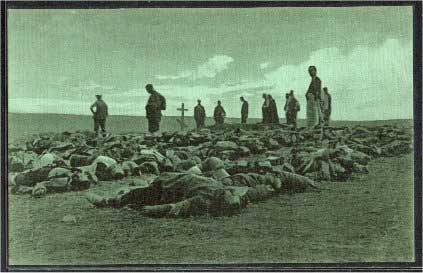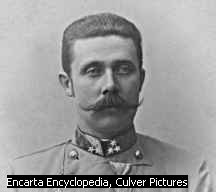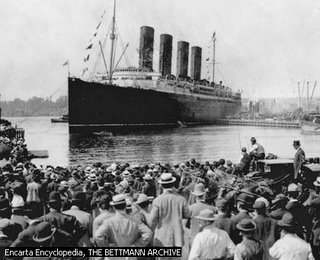What is Propaganda?
Propaganda is the spread of chosen information through media that holds a purpose of making the public believe in what it is trying to say. Propaganda can be an idea, a belief, or a fact that has an effect on the public. (Webster's Collegiate Dictionary). Examples of propaganda can be seen in everyday life. For example, when a clothing company is printing out posters of their clothes making you look beautiful and popular, it is trying to sell you something and make you believe that what they say is right. However, we often find that what believe they are promoting doesn’t always work out as well. So, basically what they are saying is sometimes a lie. An example of propaganda can also be found in a government when it is seeking for support, the government uses propaganda. Propaganda can be spotted by a number of ways in our life such through ‘Testimonials’, ‘Get on the Bandwagon’, ‘Glittering Generalities’, ‘Plain Folks Appeal’, ‘Card Stacking’, ‘Loaded Language’. Testimonials are related with famous people. It is when a very famous person does an ad, trying to promote an idea to its viewers. Get on the Bandwagon are messages that say that many people have already joined the group and are performing the act, and you should join too. The message may be repetitious. Glittering generalities is a simple techniques that uses simple slogan to win support. For example, "A vote for me is a vote for peace." This kind of technique doesn’t state why peace should be achieved if you vote for the person. Another example might be, “You will feel ten years younger," but this doesn’t explain why you will feel ten years younger. Plain folks appeal defines its meaning. It is simply taking an average citizen out from his/her spot to do an advertisement to promote an idea. The strongest part in this type of propaganda is to maintain the trust. For example, often people might trust average person more than another famous person. Card Stacking is the simple way of printing out bold lettered words and attractive pictures to attract one’s attention towards the idea. For example, if bold lettered headings are printed out on a newspaper, it is usually to attract people’s attention on that subject. Another way of spotting propaganda is when someone uses Loaded Language. Loaded Language is used if someone wants to support a group, or if they don’t want to support them. For example, if a person supports a group, they might refer to that group as ‘freedom fighters’, however, if they aren’t fond of that group, they might refer to those people as ‘separatist movement’. Propaganda is one way that Stalin, Lenin or other powerful leaders gained more power. By studying propaganda we can determine the truth from the lies that are hidden in the posters. Here are some of the usages of propaganda during the Russian Revolution.
This poster is saying, “Our era calls - forward! The five year plan calls - f
 orward!” In the picture, there is a worker walking forward with the Russian flag, and telling everyone to do the same with the Five Years Plan. The message is conveyed to its viewers by the usage of color, and strength in the pictures. The color is red as that of Russia’s flag. So people know that is an ordinary person conveying the message. So the viewers will trust the person as one of their own. Another way the picture is conveying its message is by using strength. Notice the worker so brightly and confidently walking towards us. This shows that its viewers should do the same. They should face confidently whatever problem comes in their way during the Five Years Plan. This poster is, however, a lie. The work was hard, and the state had the control. The peasants and workers were unhappy, and were offended with the Five Year Plan. The Five Year Plan also included collectivization, which took small land away and combined it to form large farms. The kolkhozes were the most disappointed group that objected their farms, hard work and success being shared with poor and inefficient farmers. The picture is trying to get people to think that everyone appreciates the Five Year Plan, and so should you.
orward!” In the picture, there is a worker walking forward with the Russian flag, and telling everyone to do the same with the Five Years Plan. The message is conveyed to its viewers by the usage of color, and strength in the pictures. The color is red as that of Russia’s flag. So people know that is an ordinary person conveying the message. So the viewers will trust the person as one of their own. Another way the picture is conveying its message is by using strength. Notice the worker so brightly and confidently walking towards us. This shows that its viewers should do the same. They should face confidently whatever problem comes in their way during the Five Years Plan. This poster is, however, a lie. The work was hard, and the state had the control. The peasants and workers were unhappy, and were offended with the Five Year Plan. The Five Year Plan also included collectivization, which took small land away and combined it to form large farms. The kolkhozes were the most disappointed group that objected their farms, hard work and success being shared with poor and inefficient farmers. The picture is trying to get people to think that everyone appreciates the Five Year Plan, and so should you.Thi
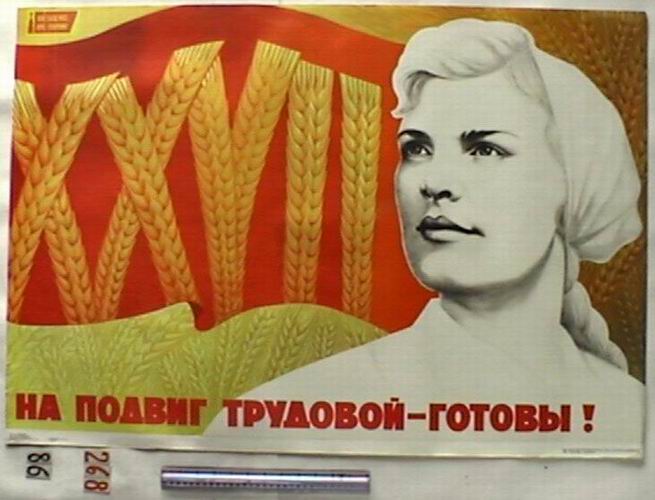 s painting shows a woman who is ready for the work given to the workers during the Five Years Plan. The painting says, ‘We are READY for the work!” Work means to harvest the crops and give away 90% of the surplus produced. The message in this picture is very clear. The picture is trying to convince its viewers that people should be hard working because that is how we all can benefit. This picture is trying to make the people think that they should work hard for their state and give up all that they can like the woman in the picture. The picture conveys its message by using the Plain Folks Appeal, where an average individual in the picture builds up trust among other to make them follow him/her. It is also using the wheat as the building blocks for the words for the flag of Russia that says the words, “We are READY for the work!” The effective part in this poster is that the woman looks so determined, and ready for any work, however, this was not the case in Russia during the Five Years Plan.
s painting shows a woman who is ready for the work given to the workers during the Five Years Plan. The painting says, ‘We are READY for the work!” Work means to harvest the crops and give away 90% of the surplus produced. The message in this picture is very clear. The picture is trying to convince its viewers that people should be hard working because that is how we all can benefit. This picture is trying to make the people think that they should work hard for their state and give up all that they can like the woman in the picture. The picture conveys its message by using the Plain Folks Appeal, where an average individual in the picture builds up trust among other to make them follow him/her. It is also using the wheat as the building blocks for the words for the flag of Russia that says the words, “We are READY for the work!” The effective part in this poster is that the woman looks so determined, and ready for any work, however, this was not the case in Russia during the Five Years Plan.This pictur
 e invites the attention of its viewers towards the smiling face of the working man in Russia at the time of the Russian Revolution. The message in this picture is clear. A man should be proud that he serves as a worker, and there’s nothing of better ranking than that. The actual words in this picture means, “There is nothing more superior to the term "working man"!” This message is getting the people to think that the working class is superior to any other class, and that you should be feeling proud to be a part of the working class. This message conveys its meanings to the viewers by using its colors, and the smiling face of the worker. The color is red as that of the Russian flag so as to put the meaning of patriotism in the picture. The man in the picture look very confident and he is smiling, which puts in a belief that the working class is also smiling. This technique is known as Get on the Band Wagon, which means that everyone else is doing it, so you must do it also. The effect in the poster is on the working class. Its influence on the working class is great. The working class maybe flattered by this poster, and might as well work harder. However, this wasn’t the case in Russia during the Revolution.
e invites the attention of its viewers towards the smiling face of the working man in Russia at the time of the Russian Revolution. The message in this picture is clear. A man should be proud that he serves as a worker, and there’s nothing of better ranking than that. The actual words in this picture means, “There is nothing more superior to the term "working man"!” This message is getting the people to think that the working class is superior to any other class, and that you should be feeling proud to be a part of the working class. This message conveys its meanings to the viewers by using its colors, and the smiling face of the worker. The color is red as that of the Russian flag so as to put the meaning of patriotism in the picture. The man in the picture look very confident and he is smiling, which puts in a belief that the working class is also smiling. This technique is known as Get on the Band Wagon, which means that everyone else is doing it, so you must do it also. The effect in the poster is on the working class. Its influence on the working class is great. The working class maybe flattered by this poster, and might as well work harder. However, this wasn’t the case in Russia during the Revolution.This propaganda poster shows the message that the workers are reall
 y impressed with their work during the Russian Revolution. It is trying to get people to think that Russia did make a lot of improvements after the Bolsheviks came to power. The poster conveys its message by using machinery and the smile on the man’s face. Machinery did improve a lot, and old industries were re-developed. People did improve a lot in this period. People had better living and working conditions, and hard work was appreciated by giving out medals, or better pay. However, the wages of the workers were set, and the workers couldn’t choose the work but were assigned a work to do. Harsh consequences were awaiting the peasant who skipped work. The smile on the persons face is indeed deep which means that the workers were happy. However, some workers who found that hard works was really rewarded with a better life appreciated the work while others resented the fact of Stalin putting them into work categories that didn’t suit them.
y impressed with their work during the Russian Revolution. It is trying to get people to think that Russia did make a lot of improvements after the Bolsheviks came to power. The poster conveys its message by using machinery and the smile on the man’s face. Machinery did improve a lot, and old industries were re-developed. People did improve a lot in this period. People had better living and working conditions, and hard work was appreciated by giving out medals, or better pay. However, the wages of the workers were set, and the workers couldn’t choose the work but were assigned a work to do. Harsh consequences were awaiting the peasant who skipped work. The smile on the persons face is indeed deep which means that the workers were happy. However, some workers who found that hard works was really rewarded with a better life appreciated the work while others resented the fact of Stalin putting them into work categories that didn’t suit them.This is a poster of Stalin advising a very big population (Russia). The message in this picture tells us that Stalin is the ad
 viser of Russia and he knows what is best for Russia. The picture is trying to tell the people that Stalin is the all-knowing power and the ultimate handler of Russia. In this picture Stalin is saying, ‘We are for peace.” The poster conveys its message to the viewers by its color, and by the position of Stalin. The background color is red, as the flag of Russia. The position of Stalin in this picture also makes significance. He is situated high above the other and everyone else is looking up to him. This poster is very effective in showing that everybody should follow Stalin and support him because the way that he is taking is always correct.
viser of Russia and he knows what is best for Russia. The picture is trying to tell the people that Stalin is the all-knowing power and the ultimate handler of Russia. In this picture Stalin is saying, ‘We are for peace.” The poster conveys its message to the viewers by its color, and by the position of Stalin. The background color is red, as the flag of Russia. The position of Stalin in this picture also makes significance. He is situated high above the other and everyone else is looking up to him. This poster is very effective in showing that everybody should follow Stalin and support him because the way that he is taking is always correct.This poster is saying, “All power to soviets! Peace to all nations! Land to peasants!
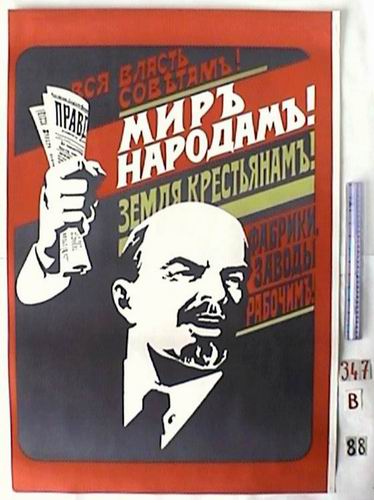 Factories to workers!” The message in this poster is to trust Lenin and give him power. It is trying the people to support him and give him more power. It conveys its message to its viewers by the smile on Lenin’s face. This poster is particularly effective for gaining support for Lenin. In this poster, Lenin is raising up his hands in an orderly fashion and with confidence so that he would gain the support and power from the people. The message that Lenin conveys in the picture was untrue. Although all the power belonged to the Soviets, they controlled the nation, they owned land and controlled land, and they employed workers accordingly to how the states need him. The Bolsheviks rule was proven to be as tough as that of the Tsar’s regime as the workers were given very less time to sleep, and the time for working was fixed. However, unlike the Tsar’s regime, the Bolsheviks rewarded hard work with better pay, housing and medals.
Factories to workers!” The message in this poster is to trust Lenin and give him power. It is trying the people to support him and give him more power. It conveys its message to its viewers by the smile on Lenin’s face. This poster is particularly effective for gaining support for Lenin. In this poster, Lenin is raising up his hands in an orderly fashion and with confidence so that he would gain the support and power from the people. The message that Lenin conveys in the picture was untrue. Although all the power belonged to the Soviets, they controlled the nation, they owned land and controlled land, and they employed workers accordingly to how the states need him. The Bolsheviks rule was proven to be as tough as that of the Tsar’s regime as the workers were given very less time to sleep, and the time for working was fixed. However, unlike the Tsar’s regime, the Bolsheviks rewarded hard work with better pay, housing and medals.Drawing to the conclusion, Russia was full with posters such as these. These posters tells a lot of Russia itself and how one had printed posters to gain support, or power of the people. The Russian people had most often trusted this propaganda and supported Lenin, or Stalin gain power, but found out that these aren’t always true. For example, the workers weren’t as happy as Stalin or Lenin had promised. Stalin formed a class system that had also existed in Tsar Regime. The use of propaganda in Russia was very common since there were more conflicts to resolve by the use of propaganda such as the Five Years Plan were said to be good by the workers, or when Stalin put the workers into works that the workers resented, posters were printed out saying that Stalin knows best. Therefore, propaganda is something that is half-truth, you can’t believe propaganda. During Stalin rule, he used propaganda on children as well as on adults. The message he sent through propaganda was that he tried to develop a ‘cult of the personality’ which meant that he was the father figure and that he knew everything. He also made his image in many states and books to gain influence and power.
Sources:
http://www.historians.org/Projects/GIroundtable/Propaganda/Propaganda_TOC.htm
http://library.thinkquest.org/C0111500/whatis.htm
http://eng.davno.ru/posters/collections/stalin/poster-07.html
http://socrates.berkeley.edu/~vbonnell/posters.htm
http://www.internationalposter.com/ru-text.cfm
http://www.jhindin.com/posters/
http://en.wikipedia.org/wiki/Timeline_of_Russian_history

